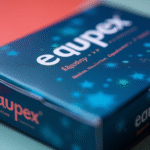Remittance Composition in Mexico
According to data from Banco de México, only about 20% of remittances received in Mexico during June came through bank transfers. The remaining 80% was channeled via non-bank institutions such as convenience stores, department stores, self-service stores, and pharmacies. Juan José Li Ng, an expert from BBVA, clarified that of the formally recorded remittances in Mexico, 48.9% were deposited into bank and non-bank accounts, while the remaining 51.1% was directly collected in cash.
However, with this information from Banco de México, it’s unclear what the amount of cash-originated remittances subject to the new 1% tax would be, as imposed by the US government.
US Impact and Tax Exemptions
In the United States, experts are also trying to understand the implications of this remittance tax and identify which entities will be subject to it. Starting from the first business day in January, the US government will impose a 1% tax on cash-based remittances originating from the country.
Marina Olman, a financial firm operations advisor in the US, explained during an online seminar that, according to her interpretation, remittances exempt from this measure would be those sent via credit or debit cards issued by financial institutions operating in the US. She also mentioned that digitally-mediated transfers would be exempt from the tariff.
Olman specified that entities subject to reporting this tax to the US Treasury include remittance companies, private banks, financial institutions, trust companies, credit unions, and financial intermediaries.
She emphasized that cash remittances, whether sent directly or through money orders by a displaced worker, will be taxed. Global financial system officials noted that all remittances arrive in Mexico digitally from the US, but nearly half are deposited in cash at a remittance center by a migrant worker. “What the US government will tax is the remittance itself,” they clarified.
Finabien: A Potential Solution
In response to the US remittance tax and recognizing Mexico’s significant impact, President Claudia Sheinbaum announced the availability of the public banking Financiera para el Bienestar card for Mexicans in the US. This card can be linked to a US bank account, allowing migrants to send up to $400 monthly by paying a 2.99 USD fee.
“We want them to load it onto the card and send the remittance from there, following US regulations, of course,” she stressed.
To obtain the card, one can visit any of Mexico’s 53 consulates in the US or request it via email, receiving it at home within two weeks. Required documents include a consular registry, Mexican or US passport, Mexican or US driver’s license, INE (National Electoral Institute) credential, a cell phone, email address, and a residential address—which need not be in the applicant’s name.
Key Questions and Answers
- What percentage of remittances to Mexico are cash-based? Approximately 51.1% of remittances to Mexico are collected in cash, as per Banco de México data.
- Which remittance entities are subject to the US tax? The US tax on remittances will affect remittance companies, private banks, financial institutions, trust companies, credit unions, and financial intermediaries.
- What types of remittances are exempt from the tax? Digital transfers using credit or debit cards issued by US-based financial institutions and digitally-mediated transfers are exempt from the tariff.
- How can Mexican migrants in the US send money home without incurring the new tax? They can use the Financiera para el Bienestar public banking card, linked to a US bank account, to send up to $400 monthly with a 2.99 USD fee.






